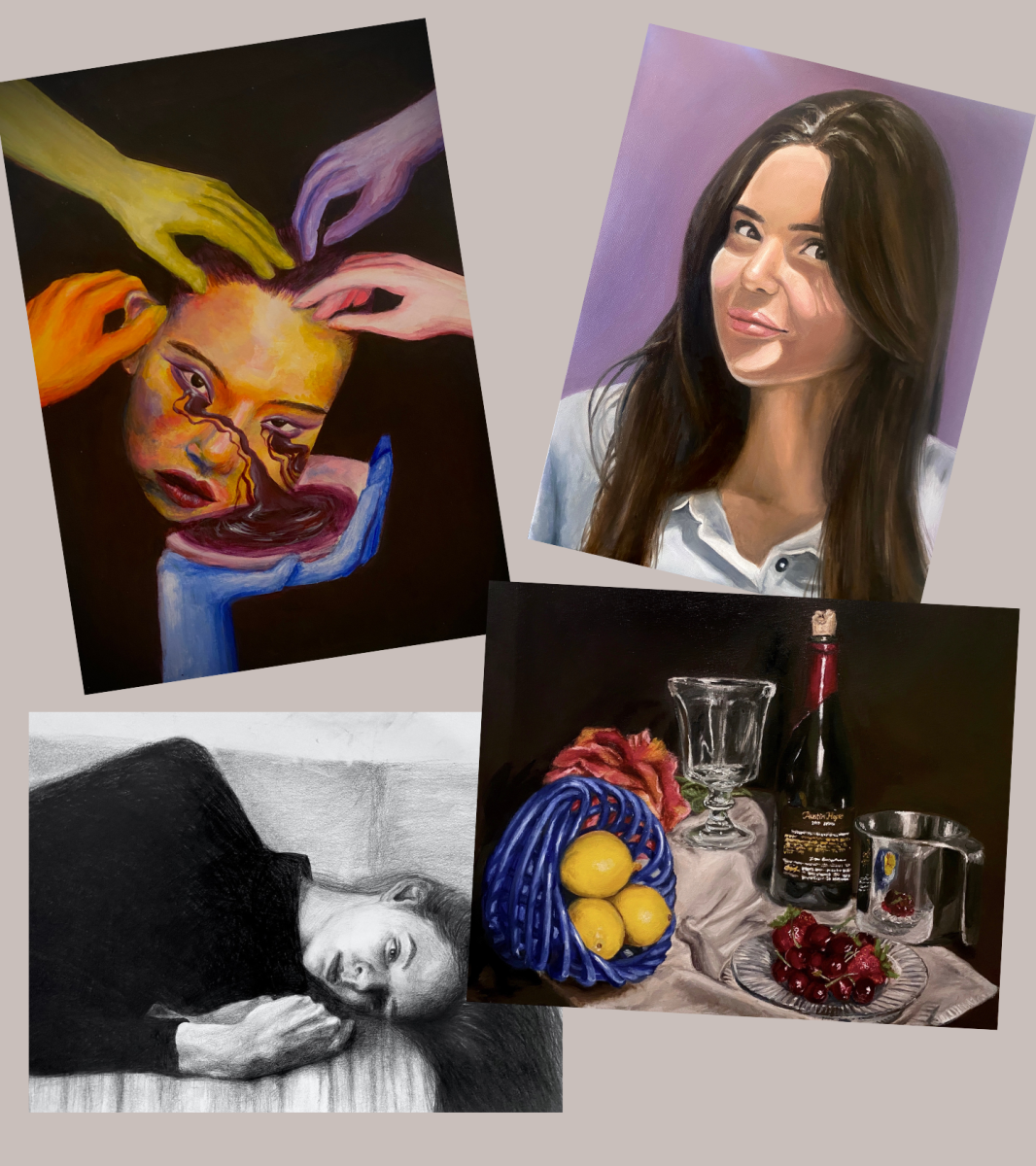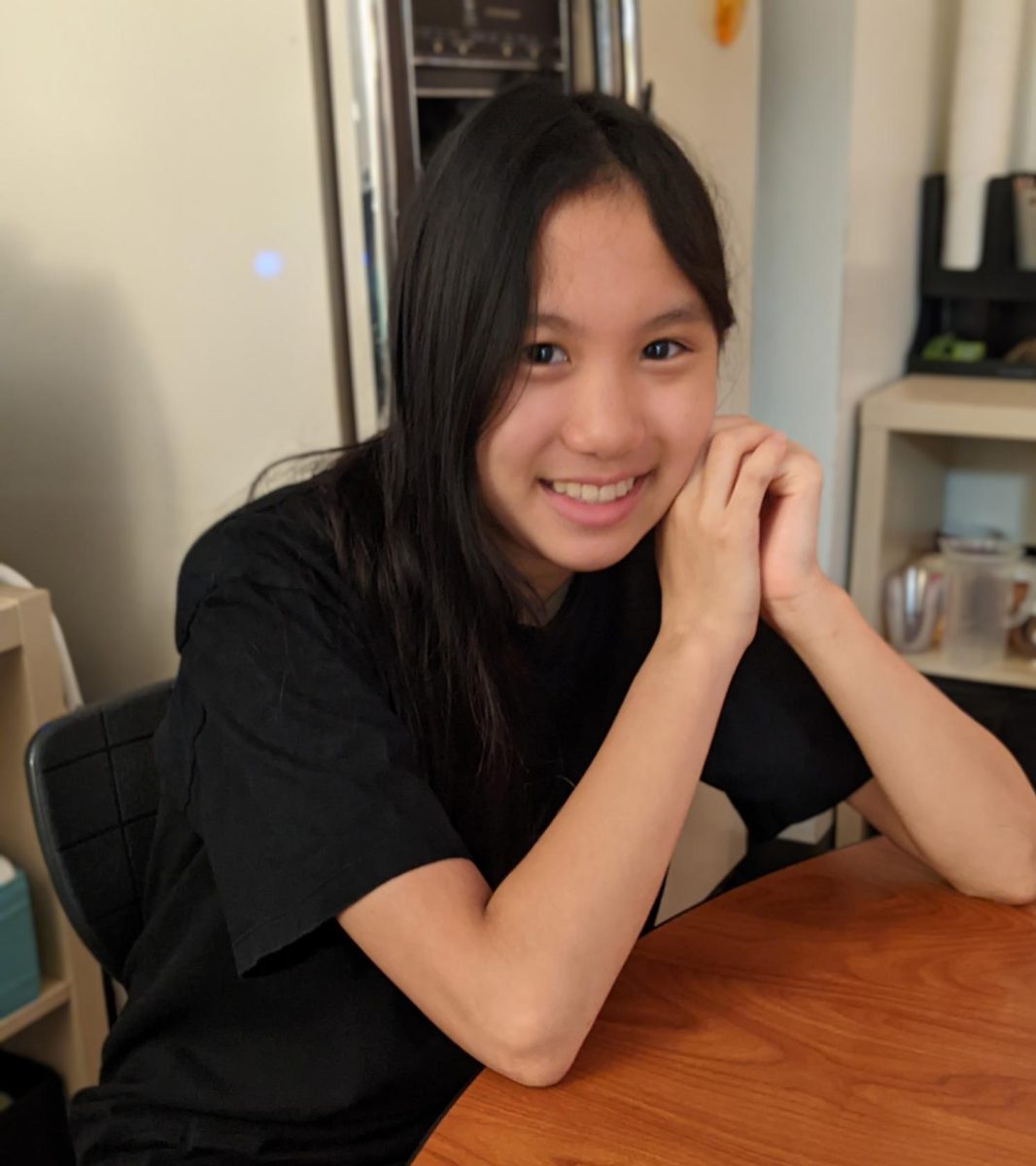Sophomore Sarah Jung recently posted two of her art works on the Dreamcatcher, an “Object Still Life” painting using textures of glass, fabrics, and ceramics, as well as a pencil drawn piece called “Drowning” that expresses the feeling of exhaustion. Sitting down with her, we explored her passion and her motivations to create art and share it with others.
Q: When did you discover that you liked painting and drawing?
I’ve done art for a long time, like ever since I was really young, but for the past like two years or so, [I’ve really been] into painting or drawing. I think painting is more of my type, since drawing has a lot of details that I’m not really good at expressing, and it takes way too much time, but a painting you can finish pretty quickly. I do like drawing, it is fun, but there’s a limit to materials you can use: pencils or colored pencils. So I think I prefer painting more.
Q: How did you know that you like to do art on your own time or even during classes?
My mom used to send me to art tutoring classes ever since I was in elementary school, so I think I slowly developed my art skills. And I think I have the most experience with art compared to other sports or any extracurriculars. So I think that slowly became my passion, and it became more straightforward that I really like art, and I should [pursue it further].
Q: What would you say is the hardest part of making your art and the easiest part?
I think the hardest part is probably coming up with ideas or inspiration. And recently, I’ve been trying to not rely on pictures on the Internet to use for reference because of copyright reasons, so I’ve been trying to use my friend’s pictures or even myself. [But also], sometimes in the process of making an art piece, I [will] really hate it, or want to give up, but I just keep going instead of giving up.
And the easiest part, [or the part I enjoy the most], is experimenting with [different mediums]. For example, [as I said before] I really like painting, but before last year, I’d only done acrylic or watercolor paintings. But I recently started to do oil paintings, and it was really interesting to me because I’d never done them before. Iit was like a new experience for me. So I think I really like to enjoy testing out new materials or mediums and maybe even mixing materials and using mixed media to produce artworks.
Q: So how do you practice your craft? How do you try to improve?
I have a small sketchbook to practice my art skills, but I think most of my practicing comes from my school art classes. For the practice drawings or paintings, I would just use pictures from the Internet because it’s not like a major art piece, and I just try to improve my understanding of how different lightings, reflections, and other elements of art work. Or if there’s a specific effect I want to use in my main artwork, I would do a study on it. So, for example, if I wanted to do a water reflection, I would search up similar artworks and try to practice that and eventually execute it in my real artwork.
Q: So how do you differentiate between pieces you want to display or submit versus those you would like to keep for yourself?
I think I’m a really hard critic of myself, so most of the time I really hate my artwork. There’s usually a specific image in my mind of what I want the painting to look like, but actually I can’t do that, and I get really frustrated. So there’s not a lot of paintings that I’m really satisfied with. I would say the ones I really do like would be the ones that either turned out really different than I actually had in mind or that I was satisfied with.
Q: Do you plan on pursuing a career in art? What motivated you to go in that direction?
I didn’t really have a specific career in mind before, but back in middle school, I was really into makeup, and then I bought a lot of makeup, and used a lot of products, and I was really interested in the packaging of the makeup products, especially perfume bottles. And I would wonder, “What if I design these products?” And that’s when I learned about design, specifically packaging design and graphic design, and I thought maybe this is meant for me. And I didn’t really have another career field that I wanted to passionately be in instead of art. So I think graphic design really stood out to me, especially, like, packaging design.
Q: If there are any people who want to make art but don’t know how to start, what would you say to them?
I would say draw a lot, experiment a lot, and figure out what type of art you like, or find a medium or that you’re really passionate about. For example, if you like digital art, you can learn more about digital art. And I think taking an art class in school, or getting a tutor, or taking a class really helps. Also, figuring out what kind of things you like to draw or paint can also help. So, for example, I like drawing paintings of people, like faces, portraits, instead of just landscapes. And instead of just trying to make a big piece that’s perfect from the start, I think practice is really important. So studying materials, and even though it’s like a really small piece, you can practice a lot and then build up your skills, and I think that’s how you can improve.



